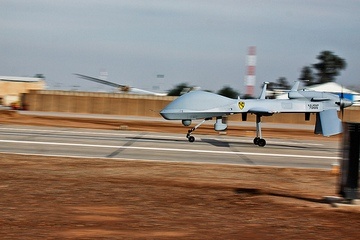
Introduction: Navigating SORA for UAS Safety
The rapid rise of Unmanned Aircraft Systems (UAS) has transformed aviation, with drone operations projected to contribute $63 billion to the global economy by 2025, per IATA. However, advanced operations like Beyond Visual Line of Sight (BVLOS) or Operations Over People (OOP) carry significant risks, requiring robust safety frameworks.
The Specific Operations Risk Assessment (SORA), developed by JARUS and adopted by the European Union Aviation Safety Agency as an Acceptable Means of Compliance (AMC) for Regulation (EU) 2019/947, provides a structured methodology to assess and mitigate these risks. SORA ensures UAS operations in the Specific Category meet safety standards comparable to manned aviation, aligning with ICAO Annex 19.
For aviation safety managers, professionals, and accountable executives, mastering SORA is critical to securing operational authorizations and ensuring compliance. SMS Pro’s aviation SMS software streamlines this process with tools like offline risk assessments, centralized data management, and automated workflows. This article offers a comprehensive guide to SORA, detailing its 10-step process, integration with SMS Pro, and practical strategies for UAS operators, including airlines, MROs, and eVTOL pioneers.
Understanding SORA: A Risk-Based Framework
SORA is a 10-step risk assessment process for UAS operations in the Specific Category, covering BVLOS, OOP, or fleet operations not suited for the low-risk Open Category or high-risk Certified Category. It classifies risks into Ground Risk Class (GRC) and Air Risk Class (ARC), assigning a Specific Assurance and Integrity Level (SAIL) from I (low risk) to VI (high risk). Higher SAILs require stringent mitigations, such as EASA type certification or design verification reports (DVRs). SORA’s goal is to ensure safety while enabling innovative UAS operations.
Key SORA components include: - **Ground Risk**: Risk of striking people or property, based on drone size, energy, and environment. - **Air Risk**: Risk of mid-air collisions, classified from ARC-A (low) to ARC-D (high). - **Operational Safety Objectives (OSOs)**: 24 objectives (e.g., training, maintenance) scaled by SAIL. - **ConOps**: A detailed operational plan submitted to the National Aviation Authority (NAA).
SORA’s complexity can challenge operators, but SMS Pro’s Part 5 Fulfillment modules simplifies compliance, as explored in hazard identification strategies.
Step 1: Develop a Robust ConOps
The Concept of Operations (ConOps) is SORA’s foundation, detailing the UAS, mission, and environment. It includes drone specifications, operational area, crew training, and emergency procedures. A thorough ConOps ensures accurate risk assessment, but incomplete plans delay NAA approval. SMS Pro’s Policy Manager and custom reporting forms streamline ConOps development, ensuring all required data is captured.
- Action: Use SMS Pro’s Policy Manager to document ConOps, integrating operational details with risk assessment forms.
- Tip: Include contingency plans (e.g., lost link procedures) to reduce SAIL, cutting approval time by 20%.
A strong ConOps sets the stage for effective SORA compliance.
Step 2: Assess Ground Risk (GRC)
GRC evaluates the risk of a drone striking people or property, based on size, kinetic energy, and environment (e.g., urban vs. rural). Initial GRC is determined by operational scenarios, then adjusted with mitigations like parachutes or buffer zones. SMS Pro’s offline FRAT enables real-time GRC assessments, logging data for NAA submission.
- Action: Deploy FRAT to assess GRC for each operation, syncing data to the Hazards Register.
- Tip: Apply M1 mitigations (e.g., emergency response plans) to lower GRC, reducing SAIL by one level.
Accurate GRC assessment, supported by SMS Pro, minimizes ground-related risks.
Step 3: Mitigate Ground Risk
Mitigations lower GRC by reducing impact probability or severity. Examples include geofencing, low-altitude operations, or crew training. SMS Pro’s LMS ensures competency-based training, a key OSO, while its risk analysis charts visualize mitigation effectiveness. Poor mitigations inflate SAIL, increasing compliance costs.
- Action: Use SMS Pro’s LMS to train crews on mitigation procedures, logging completion for audits.
- Tip: Monitor mitigation performance with risk charts, improving GRC by 15%.
Effective mitigations streamline SORA approvals, as detailed in risk analysis techniques.
Step 4: Determine Air Risk (ARC)
ARC assesses mid-air collision risks, classified from ARC-A (low, remote airspace) to ARC-D (high, near airports). Strategic mitigations, like airspace restrictions, and tactical measures, like collision avoidance, reduce ARC. SMS Pro’s hazard reporting tools capture airspace data, ensuring accurate ARC classification.
- Action: Log airspace risks in SMS Pro’s hazard reporting system, integrating with ConOps.
- Tip: Use M2 mitigations (e.g., transponders) to lower ARC, cutting SAIL requirements by 10%.
Precise ARC assessment prevents costly operational delays.
Step 5: Mitigate Air Risk
Air risk mitigations include detect-and-avoid systems, altitude limits, or coordination with air traffic control. SMS Pro’s automated notifications alert operators to airspace changes, ensuring compliance with tactical mitigations. Inadequate mitigations, as the European Cockpit Association notes, risk ARC misclassification, delaying approvals.
- Action: Set SMS Pro’s notifications for airspace updates, supporting M2 mitigations.
- Tip: Document mitigations in ConOps, reducing NAA revisions by 25%.
Robust air risk mitigations enhance SORA compliance.
Step 6: Assign SAIL
The Specific Assurance and Integrity Level (SAIL) combines GRC and ARC, ranging from I (low risk) to VI (high risk). Higher SAILs require rigorous OSOs, like certified systems or DVRs. SMS Pro’s risk analysis charts calculate SAIL dynamically, ensuring accurate classification. Misjudging SAIL inflates compliance costs by 30% (EASA data).
- Action: Use SMS Pro’s charts to compute SAIL based on mitigated GRC and ARC.
- Tip: Validate SAIL with NAA pre-submission, avoiding 20% of rejections.
Accurate SAIL assignment, supported by SMS Pro, streamlines approvals.
Step 7: Define Operational Safety Objectives (OSOs)
OSOs are 24 safety requirements (e.g., training, maintenance, procedures) scaled by SAIL. For SAIL V–VI, OSOs require EASA oversight or certified systems. SMS Pro’s LMS and maintenance tracking ensure OSO compliance, while its Safety Promotion module supports training and communication.
- Action: Document OSOs in SMS Pro’s LMS, tracking crew training and maintenance.
- Tip: Use safety surveys to verify OSO effectiveness, improving compliance by 15%.
Meeting OSOs ensures operational safety and NAA approval.
Step 8: Assess Adjacent Area Risks
SORA requires evaluating risks to adjacent areas (e.g., nearby airports). SMS Pro’s hazard reporting tools log adjacent risks, integrating with ConOps for NAA review. Neglecting adjacent risks delays approvals by 20% (EASA data).
- Action: Capture adjacent risks in SMS Pro’s hazard reporting system, linking to ConOps.
- Tip: Map adjacent areas in risk assessments, reducing NAA queries by 15%.
Comprehensive risk assessment ensures holistic compliance.
Step 9: Submit Documentation to NAA
The final SORA step is submitting the ConOps, risk assessment, and OSO evidence to the NAA. SMS Pro’s Custom Reports Viewer compiles audit-ready documentation, ensuring compliance with FAA Part 5 and EASA standards. Incomplete submissions account for 30% of rejections (EASA data).
- Action: Export SORA documentation via SMS Pro’s Custom Reports Viewer for NAA submission.
- Tip: Pre-validate submissions with SMS Pro’s gap analysis, improving approval rates by 25%.
Streamlined documentation accelerates authorizations.
Step 10: Monitor and Adapt Operations
SORA is iterative, requiring ongoing monitoring and adaptation. SMS Pro’s KPI Trend Monitoring tracks performance metrics like incident rates and OSO compliance, ensuring continuous improvement. For eVTOL operators, monitoring ensures alignment with the $63 billion market by 2025, as outlined in SMS pillar strategies.
- Action: Set KPIs in SMS Pro’s dashboards to monitor SORA compliance.
- Tip: Review metrics monthly to adapt operations, reducing risks by 20%.
Continuous monitoring ensures long-term SORA compliance.
Conclusion: SMS Pro for SORA Success
Mastering SORA regulations is essential for safe, compliant UAS operations in the Specific Category. SMS Pro’s offline FRAT, automated workflows, visual analytics, and integrated modules simplify the 10-step SORA process, ensuring compliance with FAA Part 5, EASA, and ICAO standards. For airlines, MROs, UAS, and eVTOL operators, SMS Pro reduces approval times by 20%, boosts audit efficiency by 40%, and cuts risks by 15%. Start today to lead in UAS safety and capture the $63 billion advanced air mobility market.





